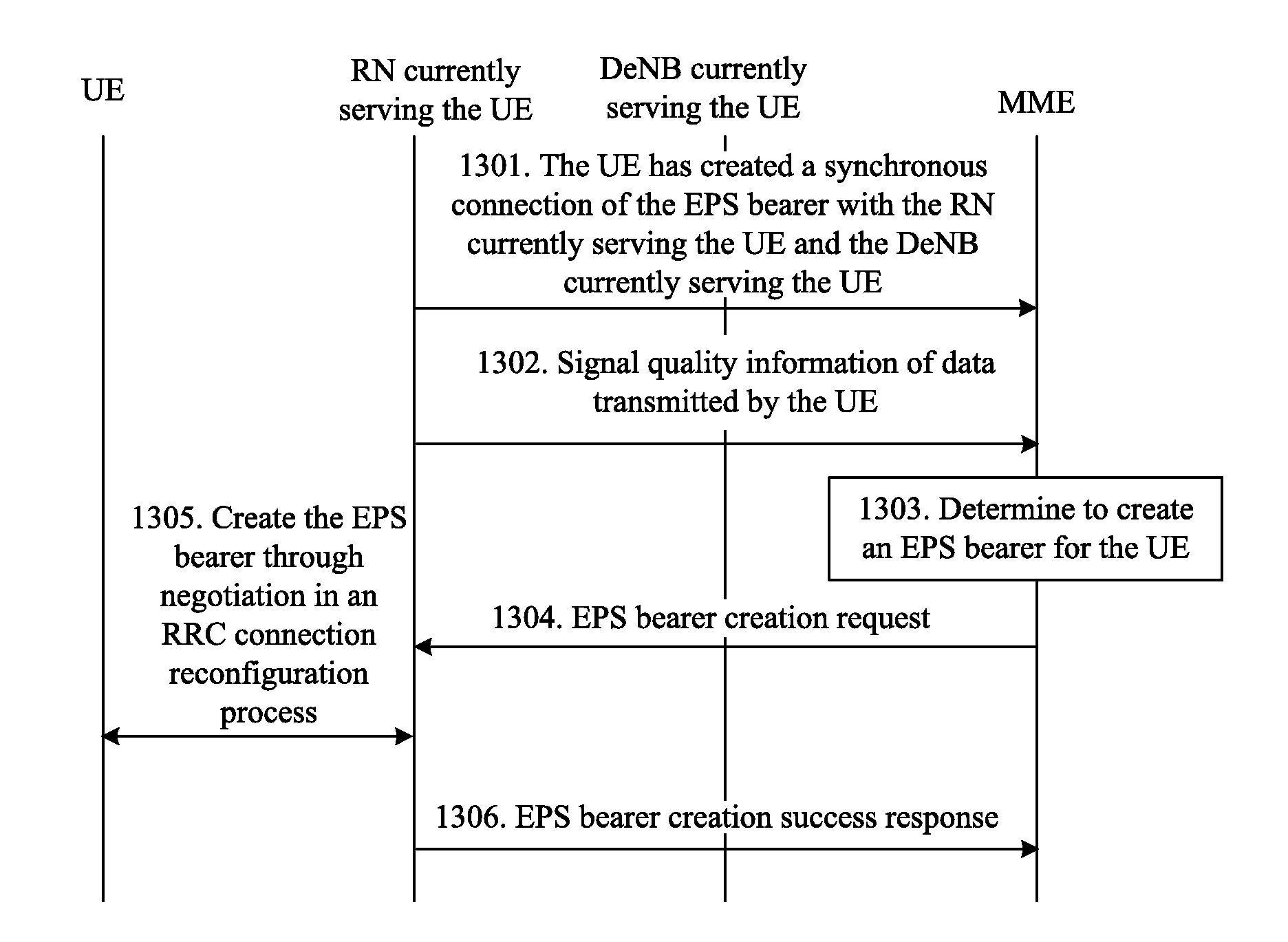Method, System and Apparatus for Transmitting Data in Carrier Aggregation Manner
a data transmission and carrier technology, applied in the field of communication technologies, can solve the problem that the ue cannot use high-band carriers for transmitting data, and achieve the effect of improving the data transmission throughput of the ue and facilitating categorized processing
- Summary
- Abstract
- Description
- Claims
- Application Information
AI Technical Summary
Benefits of technology
Problems solved by technology
Method used
Image
Examples
embodiment 1
[0082]FIG. 7 is a schematic diagram of a system for transmitting data in a CA manner of the present invention. The system includes a DeNB currently serving a UE. The CC Group of the DeNB is CC Group 1, that is, CC 1 and CC 2 make up CC Group 1. The system also includes an RN currently serving the UE. The CC Group of the RN is CC Group 2, that is, CC 3 and CC 4 make up CC Group 2. The UE includes access stratum entities and higher layer entities, where the access stratum entities include a physical layer entity (PHY), a media access control entity (MAC), an RLC entity, and a Packet Data Convergence Protocol (PDCP) entity in sequence. The UE sets CC Group 1 to correspond to CC 1 and CC 2, sets CC Group 2 to correspond to CC 3 and CC 4, sets CC Group 1 to correspond to access stratum entities PHY 1, MAC 1, RLC 1, and PDCP 1, and sets CC Group 2 to correspond to access stratum entities PHY 2, MAC 2, RLC 2, and PDCP 2. Specially, PDCP 1 and PDCP 2 may be combined into one PDCP entity in...
embodiment 2
[0083]FIG. 8 is a schematic diagram of a system for transmitting data in a CA manner of the present invention. The system includes a DeNB currently serving a UE. The CC Group of the DeNB is CC Group 1, two EPS bearers, namely, EPS bearer 1 and EPS bearer 2, of the UE are created on CC 1 Group 1, and logical channel identifier 1 and logical channel identifier 2 are allocated to the two EPS bearers, respectively. That is, according to the logical channel identifier allocated by a network to the EPS bearer of the UE, the UE can determine on which CC Group the EPS bearer is created. The system also includes an RN currently serving the UE. The CC Group of the RN is CC Group 2. That is, CC 3 and CC 4 make up CC Group 2. On CC Group 2, the UE creates an EPS bearer, and allocates logical channel identifier 3 to the EPS bearer. The UE includes access stratum entities and higher layer entities, where the access stratum entities include PHY, MAC, RLC, and PDCP in sequence. The UE sets logical...
embodiment 3
[0110]In another embodiment (Embodiment 3), a DeNB currently serving a UE exercises centralized control on the removal of the EPS bearers of low priority on an RN currently serving the UE.
[0111]FIG. 11 is a flowchart of a method for a DeNB currently serving a UE to create an EPS bearer for the UE in a CA manner according to Embodiment 3 of the present invention. The method includes the following:
[0112]Step 1101: Through a DeNB currently serving a UE, an MME sends an EPS bearer creation request to an RN currently serving the UE, where the request carries a Pre-emption indication indicating that the MME instructs an access network entity to remove an EPS bearer of low priority and create a currently requested EPS bearer when data transmission resources are limited.
[0113]Step 1102: The RN currently serving the UE determines that its own EPS bearer of low priority needs to be removed, and feeds back an EPS bearer creation response to the DeNB currently serving the UE, where the response...
PUM
 Login to View More
Login to View More Abstract
Description
Claims
Application Information
 Login to View More
Login to View More - R&D
- Intellectual Property
- Life Sciences
- Materials
- Tech Scout
- Unparalleled Data Quality
- Higher Quality Content
- 60% Fewer Hallucinations
Browse by: Latest US Patents, China's latest patents, Technical Efficacy Thesaurus, Application Domain, Technology Topic, Popular Technical Reports.
© 2025 PatSnap. All rights reserved.Legal|Privacy policy|Modern Slavery Act Transparency Statement|Sitemap|About US| Contact US: help@patsnap.com



